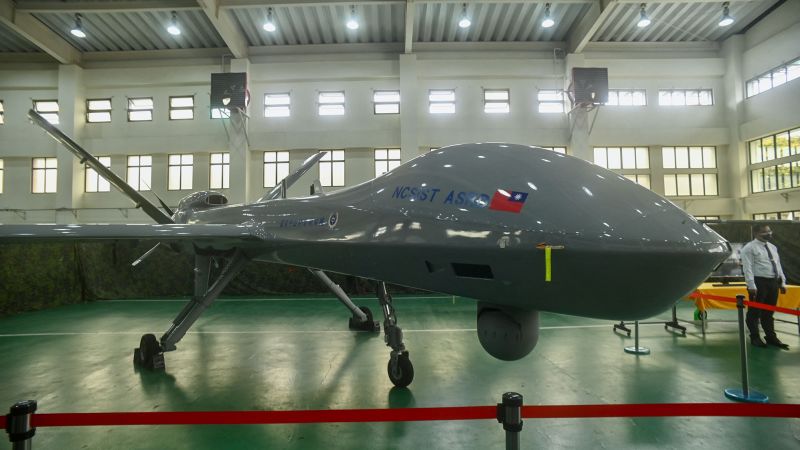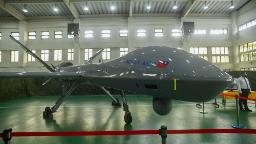

Taichung, Taiwan
CNN
—
A Taiwanese state-owned military weapons developer unveiled five new types of indigenous military drones on Tuesday, as the self-ruled island looks to boost its asymmetric warfare capabilities against China’s growing military threat.
A CNN team was among reporters invited to the National Chung-shan Institute of Science and Technology, where the Taiwanese weapons developer displayed eight types of locally developed unmanned aerial vehicles (UAV) – including five models that were shown to the public for the first time.
The new drones come in different sizes and are equipped with either combat or surveillance capabilities, said Eric Chi, director of the institute’s Aeronautical Systems Research Division, who added that the devices were designed for use by different branches of Taiwan’s military.
“In response to the new global war trends, our military has been actively building asymmetric warfare capabilities,” Chi said.
He added that the institution has been working to develop core technologies “to fully implement the national policy of defense self-sufficiency.”
The new weapons were unveiled as China’s Communist leadership increasingly asserts its territorial claims over Taiwan – an island democracy of 23.5 million people that it has never controlled – and has explicitly refused to rule out the use of force to bring it under control.
On Monday, Chinese leader Xi Jinping vowed to bolster national security and build the military into a “great wall of steel,” in his first speech to a rubber-stamp parliament after he was endorsed as president for a precedent-breaking third term.
China has also increasingly exerted its military pressure on Taiwan by regularly sending aircraft and naval ships across the median line of the Taiwan Strait.
For decades the line had served as an informal but largely respected border of control for the two sides, until Beijing began launching large-scale military drills in response to then-US House Speaker Nancy Pelosi’s visit to the island last year.
Taiwan is heavily reliant on US weapons to maintain its defense capabilities against an increasingly powerful China and has purchased many big tickets items.
Earlier this month, the Biden administration approved an estimated $619 million potential arms sale to Taiwan that included missiles for its F-16 fighter jets.
But the island democracy has also increasingly emphasized accelerating the development of indigenous weapons to boost its military capabilities, particularly cheaper more mobile weapons systems that could be instrumental in holding off any Chinese invasion.
Last October, Taiwan announced it will increase its annual defense spending this year by 13.9%. The conscription period for eligible Taiwanese men will also be extended from four months to a year starting from 2024.
During the media tour at the institute’s aviation research facility Tuesday, reporters were given a rare close-up look at various combat and surveillance drones developed by Taiwanese experts.
One of the new surveillance drones is the Albatross II UAV, which is capable of conducting extended periods of surveillance and tracking naval ships over the sea using artificial intelligence.
It is capable of staying in the air continuously for 16 hours and has a maximum range of over 300 kilometers (186 miles), the institute told reporters.
Another new surveillance drone highlighted to reporters was the portable Cardinal III UAV, which is capable of taking off and landing vertically, and is designed for monitoring activities along the coastline, the institute said.
A key combat drone unveiled to reporters is the Loitering Munition UAV, which can be operated by a single soldier. It is equipped with a warhead and is capable of targeting individuals or vehicles from the sky.
The institute said this is modeled after the US-made Switchblade 300 drones, which have been extensively used by the Ukrainian military to target enemy radar systems in its defense against Russia’s invasion.
Other types of new combat drones are also designed to make use of GPS satellite systems and image tracking technologies to launch attacks, it said.
Several indigenous military drones that are already in use by the Taiwanese military were also on display – including a Medium Altitude Long Endurance UAV that is capable of long-distance surveillance and giving advanced air and sea warning, the institute added.
Reporters were told during the trip that specifics surrounding the drones’ capabilities will not be disclosed as they are considered confidential by the Taiwanese government.
Chi, the institute’s director, said the new drones are being tested by the Taiwanese military and will likely enter mass production as early as the end of this year.
